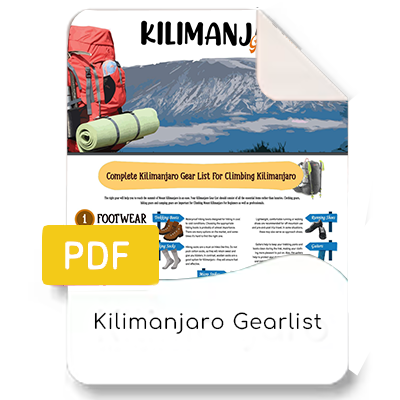START YOUR ADVENTURE WITH THE RIGHT KNOWLEDGE ABOUT
Kilimanjaro On The Mountain
Congratulations you’ve decided to take on the most thrilling adventure of Climbing Mount Kilimanjaro. Now you’re wondering how it will be like to climb the highest freestanding mountain in the world! Don’t worry you’ve landed on the right page. We will give you a complete and thoroughly knowledgeable insight into how Kilimanjaro On The Mountain will be looking like? So without further ado read on….
Climbing one of the world’s tallest mountains is not a decision to be taken lightly. It will take endurance, a decent amount of fitness, and not to mention a good sense of humor. But in the end, it’ll be all worth it. When you get yourself that cavorted photo at the top of Uhuru Peak you’ll forget about your aching muscle or tired body or sleep-deprived mind. It’ll be a completely out-of-the-body experience that is going to change your perspective of life.
Mt. Kilimanjaro Make Up
Discover the magic of Kilimanjaro’s diverse landscapes and unique volcanic layers.
Mount Kilimanjaro is not a typical mountain; it is a volcano, or rather three volcanoes, with the three main peaks, Kibo, Mawenzi, and Shira. Out of these, Mawenzi and Shira are extinct while Kibo is dormant. Uhuru peak is situated in the Kibo cones. That’s where your final summit will be
Where is Kilimanjaro National Park?
Tanzania’s pride and home to the towering Kilimanjaro – a trekker’s dream.
Kilimanjaro Park is 300 kilometers (190 mi) south of the equator situated in Kilimanjaro Region, Tanzania. You can see it on the map below.
 Kilimanjaro National Park covers the mountain from nearly 6,000 feet to the summit along with the surrounding montane forest belt above 1,820 meters (5,970 ft).
Kilimanjaro National Park covers the mountain from nearly 6,000 feet to the summit along with the surrounding montane forest belt above 1,820 meters (5,970 ft). At 2°50'–3°10'S latitude, 37°10'–37°40'E longitude, the park covers a massive area of 1,688 square kilometers (652 sq mi).
At 2°50'–3°10'S latitude, 37°10'–37°40'E longitude, the park covers a massive area of 1,688 square kilometers (652 sq mi). The Tanzania National Parks Authority (TANAPA) oversees the administrative duties of Kilimanjaro National Park.
The Tanzania National Parks Authority (TANAPA) oversees the administrative duties of Kilimanjaro National Park.
Is Mount Kilimanjaro Different from other summits?
Kilimanjaro’s unique climb—no ropes, just raw adventure and stunning views.
Now you know that Kilimanjaro is not like your traditional mountain. Actually, it’s a giant strato volcano that began forming about a million years ago. This mountain is composed of many layers of pumice, hardened volcanic ash, lava, and tephra that fell out during volcanic eruptions.
At nearly 6000meters, Mount Kilimanjaro has its weather. It experiences five different Kilimanjaro Climate Zones. Also, Mount Kilimanjaro’s average temperature is governed by altitude, and not by the time of day.
Kilimanjaro certainly has its own climate zones and weather, along with that, the flora and fauna which change drastically as you ascend the mountain.
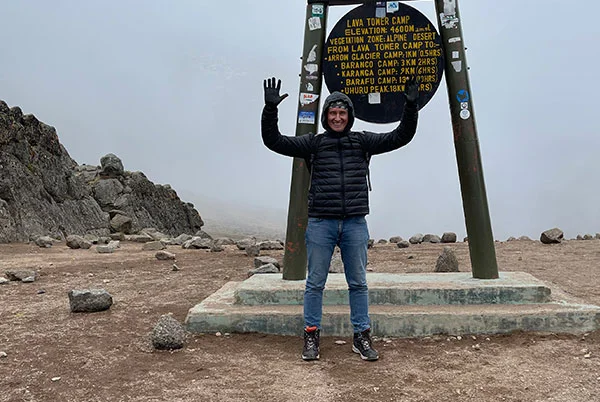
Kilimanjaro On The Mountain
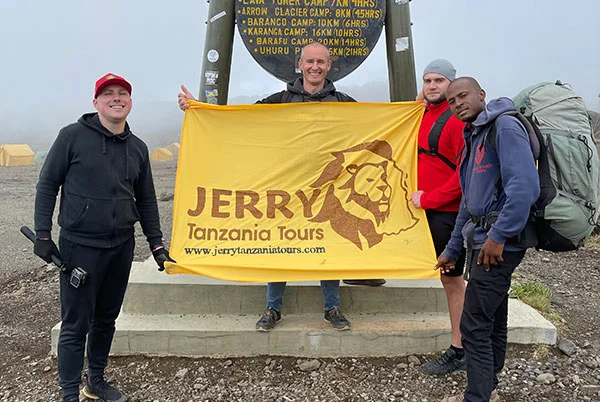
Kilimanjaro On The Mountain
Why Is The Kilimanjaro Hike So Popular Among Tourists?
Kilimanjaro’s beauty, accessibility, and adventure make it a must-do for all thrill-seekers.
Kilimanjaro is not just a mountain it's an icon. It is popularly referred to as Every men's Everest. That's why every year, over 20,000 people climb Mt. Kilimanjaro just got that special experience of standing on the roof of Africa.
Most of these people are often hill walkers looking to hike the big mountains in a foreign country, but Kilimanjaro has the added benefit of distinct environments at different levels.
You ascend through five totally different environments while Climbing Kilimanjaro.
 First comes the tropical rainforest layer at the bottom of the foothills. This is the cultivation area thick with the local population.
First comes the tropical rainforest layer at the bottom of the foothills. This is the cultivation area thick with the local population. Then there is a cloud forest. If you're lucky then you can spot a lot of wildlife like birds and monkeys and deer in that portion of your Kilimanjaro Hike.
Then there is a cloud forest. If you're lucky then you can spot a lot of wildlife like birds and monkeys and deer in that portion of your Kilimanjaro Hike. After that, you break into an Alpine heath with a rocky almost lunar-type landscape, with fewer plants.
After that, you break into an Alpine heath with a rocky almost lunar-type landscape, with fewer plants. Finally, you will touch snow and ice, with glaciers at over 5,000 meters.
Finally, you will touch snow and ice, with glaciers at over 5,000 meters.
That's the beauty of Mount Kilimanjaro, it has these very distinct ecosystems. It will almost be like every day you're in a whole new world.
Contrary to the popular myth, the Kilimanjaro Climb is very achievable. It's not technical - it's a walk-up. As long as you go slowly and don't overdo it, you've got a good chance of summiting.
What Will Be The Weather In Kilimanjaro Like?
Expect the unexpected—Kilimanjaro’s weather offers sun, snow, and everything in between.
The Kilimanjaro Weather can vary from burning hot to extremely cold within a single day. Even though Kilimanjaro doesn’t experience drastic temperature changes from season to season, the Mount Kilimanjaro Temperature is mainly determined by the altitude.
To cut a long story short, Mount Kilimanjaro’s Temperature ranges from hot, very hot to bitter nerve-wracking cold.
Climbing Mount Kilimanjaro is unique in so many different ways. From the beginning to submit, you’ll be navigating through several distinct climate zones. So much so that at one point it might feel like traveling from the equator to Antarctica in a matter of days. That’s mainly because the routes to the Uhuru Peak cross different ecological zones.
The Kilimanjaro Temperature is also highly fluctuating and almost unpredictable. One moment you’re Climbing Mount Kilimanjaro in baking sunlight, and the next you’ve to layer up against a bitter wind.
Below we have mapped out the average temperature, humidity, and precipitation figures for Moshi which is the gateway town from which most of the Kilimanjaro Hike begins.
As you can see, January and February are the warmest months, April and May are the wettest months, June and July are the coolest months, and August and September are the driest months.
Mount Kilimanjaro does not experience wide temperature changes from season to season, due to such close proximity to the equator. Instead, the temperatures on Kilimanjaro are determined more so by the altitude and not by the time of day. The average temperature at the base is around 70 to 80 degrees Fahrenheit (21 to 27 degrees Celsius). It’s where you’re supposed to begin your Kilimanjaro Hike, from there, expect the temperatures to decrease as you navigate through Mount Kilimanjaro's ecological zones.
The night temperatures at the Kilimanjaro Summit, Uhuru Point, can range between 20 and -20 degrees Fahrenheit (-7 to -29 degrees Celsius). As you know now, Mount Kilimanjaro creates its own weather which is extremely variable and impossible to predict. Therefore, we advise you to always be prepared for wet days and cold nights.
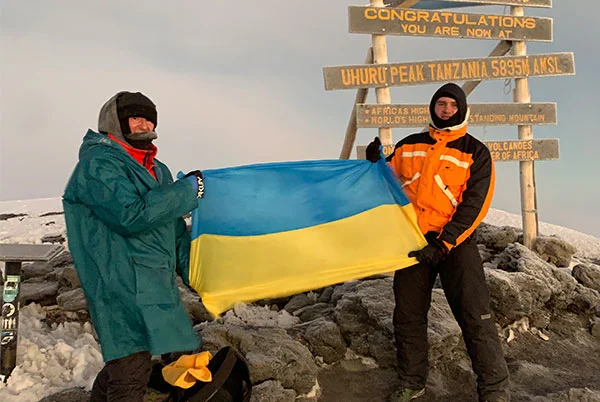
Kilimanjaro On The Mountain
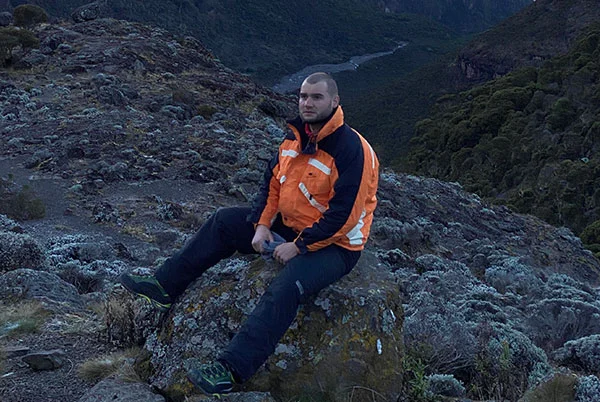
Kilimanjaro On The Mountain
Interesting Facts About Mt. Kilimanjaro
Standing 5,895 meters tall, Kilimanjaro is the tallest free-standing mountain in the world.
 Kilimanjaro is the tallest mountain in African and the highest free-standing mountain in the world.
Kilimanjaro is the tallest mountain in African and the highest free-standing mountain in the world. Kilimanjaro consists of three volcanic cones, Mawenzi, Shira, and Kibo. Out of these, Mawenzi and Shira are extinct while Kibo, the highest peak, is dormant.
Kilimanjaro consists of three volcanic cones, Mawenzi, Shira, and Kibo. Out of these, Mawenzi and Shira are extinct while Kibo, the highest peak, is dormant. Nearly every successful Kilimanjaro climber has recorded his or her thoughts about the accomplishment in a book stored in a wooden box at the top of Uhuru Peak.
Nearly every successful Kilimanjaro climber has recorded his or her thoughts about the accomplishment in a book stored in a wooden box at the top of Uhuru Peak. The oldest person ever to summit Mt. Kilimanjaro was 87-year-old Frenchman Valtee Daniel while Coaltan Tanner, a 6-year-old from Albuquerque New Mexico is the youngest to ever conquer this mountain.
The oldest person ever to summit Mt. Kilimanjaro was 87-year-old Frenchman Valtee Daniel while Coaltan Tanner, a 6-year-old from Albuquerque New Mexico is the youngest to ever conquer this mountain. A recent survey shows that over 80% glaciers of Kilimanjaro have already been melted away. Scientists further claim that at this rate Kilimanjaro will not have any glaciers left by 2040. And at this rate, there will be no remnant of ice on Mount Kilimanjaro By the year 2060.
A recent survey shows that over 80% glaciers of Kilimanjaro have already been melted away. Scientists further claim that at this rate Kilimanjaro will not have any glaciers left by 2040. And at this rate, there will be no remnant of ice on Mount Kilimanjaro By the year 2060. To prevent soil erosion and protect water sources, Shamsa Mwangunga, National Resources and Tourism minister of Tanzania, had overseen the initiative of planting 4.8 million indigenous trees around the base of the mountain in 2008.
To prevent soil erosion and protect water sources, Shamsa Mwangunga, National Resources and Tourism minister of Tanzania, had overseen the initiative of planting 4.8 million indigenous trees around the base of the mountain in 2008. South African Bernard Goosen successfully summited Mt. Kilimanjaro in a wheelchair.
South African Bernard Goosen successfully summited Mt. Kilimanjaro in a wheelchair.
Mt. Kilimanjaro Hike; A Typical Day Overview
Trek through Kilimanjaro’s ever-changing terrain—each day brings new adventures.
On the mountain, every day will be an early start. Our staff will wake you up at 6 am. He/she will bring you a warm pan of water in the tent to wash your face and hands. After that, you’ll have breakfast in a mess tent where all the meals are served.
The mass tent is well equipped with chairs, tables, dinnerware, and silverware. This is going to be your hang-out place every day before and after the hike where you’ll mingle and make friends. Your daily health check-up will also be done in the mess tent either during breakfast or during dinner.
After breakfast pack, your daypack with all the essentials for the day, and rest put in your duffel bag. Our Kilimanjaro porters will carry the rest of your belongings along with your gears to the next camp.
Typically, your hike will begin around 8:00 AM. Your average walking time will be around four to six hours per day keeping in mind that the hours vary from day today.
On the hike our Climb Kilimanjaro Guide will decide the pace and when to take breaks depending on his assessment of the party's performance.
Sometimes we have heard concerns about "too slow" pace and consequently lagging behind the guide and the rest of the group. Let me assure you, this concern is unwarranted. Being slow is fine, and in fact, the need of the mountain. Our guides will set a very slow hiking pace to give you the best chance to acclimatize to the increasing altitude. Because most people who are turned around on the mountain typically fall victim to altitude sickness, and not because they were physically exhausted.
Typically we’ll serve hot lunch halfway through your day's trek through on occasion a boxed lunch may be provided.
At the beginning of the day’s hike, the porter will stay back to wrap everything up in the camp and after that, they move ahead of the group to reach the next camp early to set everything up before your arrival.
You can have some snakes upon your arrival at the campsite. Our staff will provide you a pan of water for clean-up just before dinner. You'll have your dinner around 6:00 PM.
After dinner, our guide will discuss the next day's events with the group. After which you will hang around the mess chatting with your fellow climbers, staff, and others sharing the campsite, reading, or otherwise relaxing.
Kilimanjaro Summit Night
A midnight start, a sunrise finish—summit night is Kilimanjaro’s grand finale.
Summit attempt will be tough. It will be a minimum 12-16 hour hike. But this mammoth effort is what makes Climbing Kilimanjaro such a great achievement. It begins very early as Kilimanjaro guides try to time their trekking party to reach Uhuru Peak at sunrise.
The final preparation begins after you arrive at the Base Camp. You will have an early dinner followed by our regular briefing. On this day you will be hitting the bed earlier than on other days.
Our Mount Kilimanjaro Guide will wake you up a little after 11:00 p.m. then you will get ready and have a light snack. You will be beginning your summit attempt at midnight.
You'll begin your ascend in the cold and windy darkness. It goes without saying that under these conditions, climbing is difficult, especially on loose rock and very steep slopes.
You'll reach the Uhuru Peak summit just in time of dawn. There you will enjoy the awesome sunrise and the view up from the top. After the due celebrations and superb clicks, you’ll begin your descent to either Barafu or Kibo Hut. There, you‘ll be eating lunch. Then rest a bit to regain your strength.
It is unwise to descend immediately after summiting. Because that is where most people get tired. You need to consider last night's lack of sleep, the expenditure of energy required for the successful summit to the peak, and especially the strain put up by long-distance covered that day. After a while, we’ll continue the descent to a much lower camp. This is completely normal.
Kilimanjaro Full moon Summit climb with Jerry Tanzania Tours
Climb under the stars and summit by moonlight—Kilimanjaro’s full moon trek is magical.
At Jerry Tanzania Tours we also offer full-moon summit climbs. True to its name, these Kilimanjaro Climb are timed so that summit night takes place under a full moon. This is a truly special way to climb Kilimanjaro, as the moonshine illuminates your entire path as if you’re walking under the glitzy bed of diamonds.
The sights and landscape views, especially the Kilimanjaro Summit View is often overwhelming. In fact, a few of our visitors were so moved by the experience that they had tears in their eyes. After all, it’s such an emotional thing to get to the summit. You may never do anything bigger than that, and it’s a great privilege for us to take you up there & Jerry Tanzania Tours is here to serve the best!
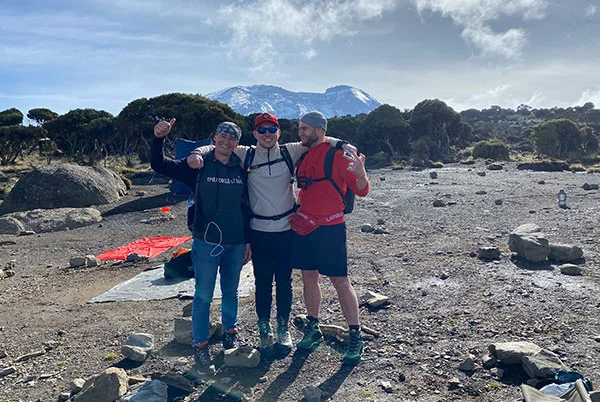
Kilimanjaro On The Mountain
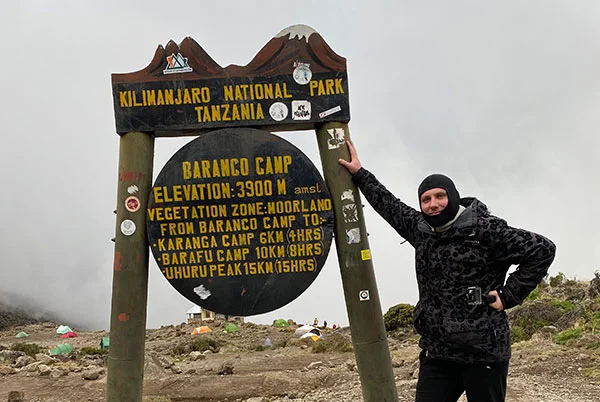
Kilimanjaro On The Mountain
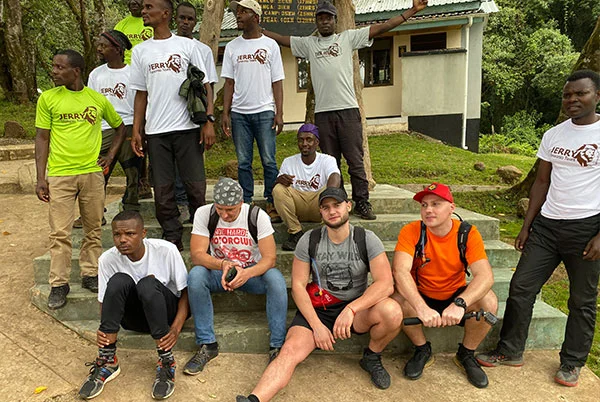
Kilimanjaro On The Mountain
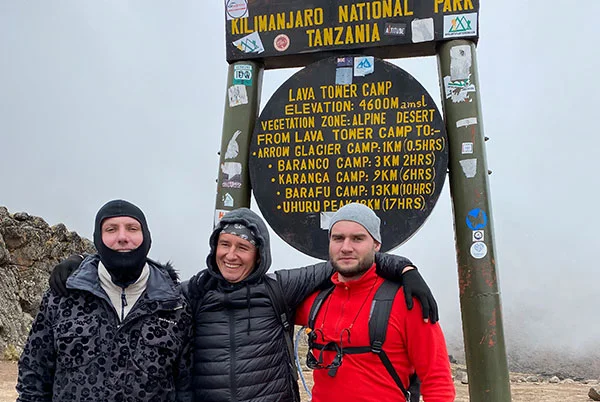
Kilimanjaro On The Mountain
Kilimanjaro On The Mountain FAQs
Everything you wanted to ask about climbing Kilimanjaro is here.
The best times to climb Kilimanjaro are during the dry seasons: January to mid-March and June to October. These months offer more stable weather conditions and clearer skies, making the trek more enjoyable and safer for climbers.
The climb typically takes between 5 to 9 days, depending on the route chosen. Longer Kilimanjaro Climbing Routes allow for better acclimatization, which increases the chance of successfully reaching the summit and reduces the risk of altitude sickness.
No technical climbing skills are required for Kilimanjaro. It’s a non-technical trek, often called a "walk-up." However, endurance, fitness, and mental preparation are essential to handle the altitude and long trekking days.
Summit night begins at midnight and can last 12 to 16 hours. You'll trek in the dark on steep terrain, aiming to reach Uhuru Peak at sunrise. The cold, altitude, and loose rock make it challenging but incredibly rewarding.
Altitude affects everyone differently, with some experiencing headaches, nausea, or shortness of breath. To minimize Kilimanjaro Altitude Sickness, climb slowly, stay hydrated, and consider taking acclimatization days or using medication like Diamox.
Essential items in your Kilimanjaro Packing List include layered clothing, a warm sleeping bag, hiking boots, sunscreen, and a good backpack. Additionally, gear like trekking poles, gloves, and a headlamp are vital for summit night. Make sure you have clothing for both hot and freezing conditions
Jeremiah Online
 Located In Tanzania
Located In Tanzania
What To Plan A Kilimanjaro Adventure?
Contact Us. We are always here to help you

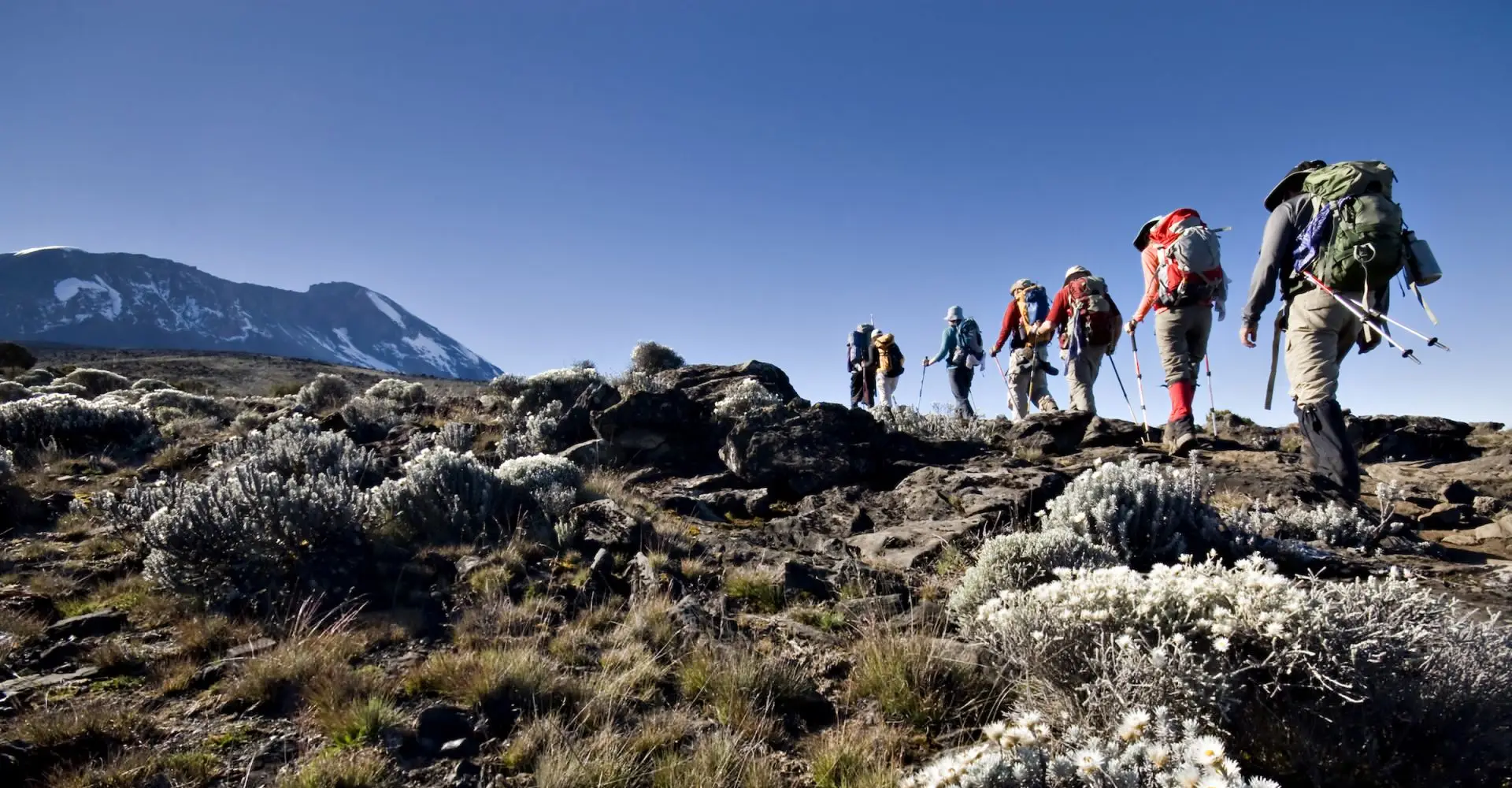
 Kilimanjaro National Park covers the mountain from nearly 6,000 feet to the summit along with the surrounding montane forest belt above 1,820 meters (5,970 ft).
Kilimanjaro National Park covers the mountain from nearly 6,000 feet to the summit along with the surrounding montane forest belt above 1,820 meters (5,970 ft).








 Whatsapp
Whatsapp Chat Online
Chat Online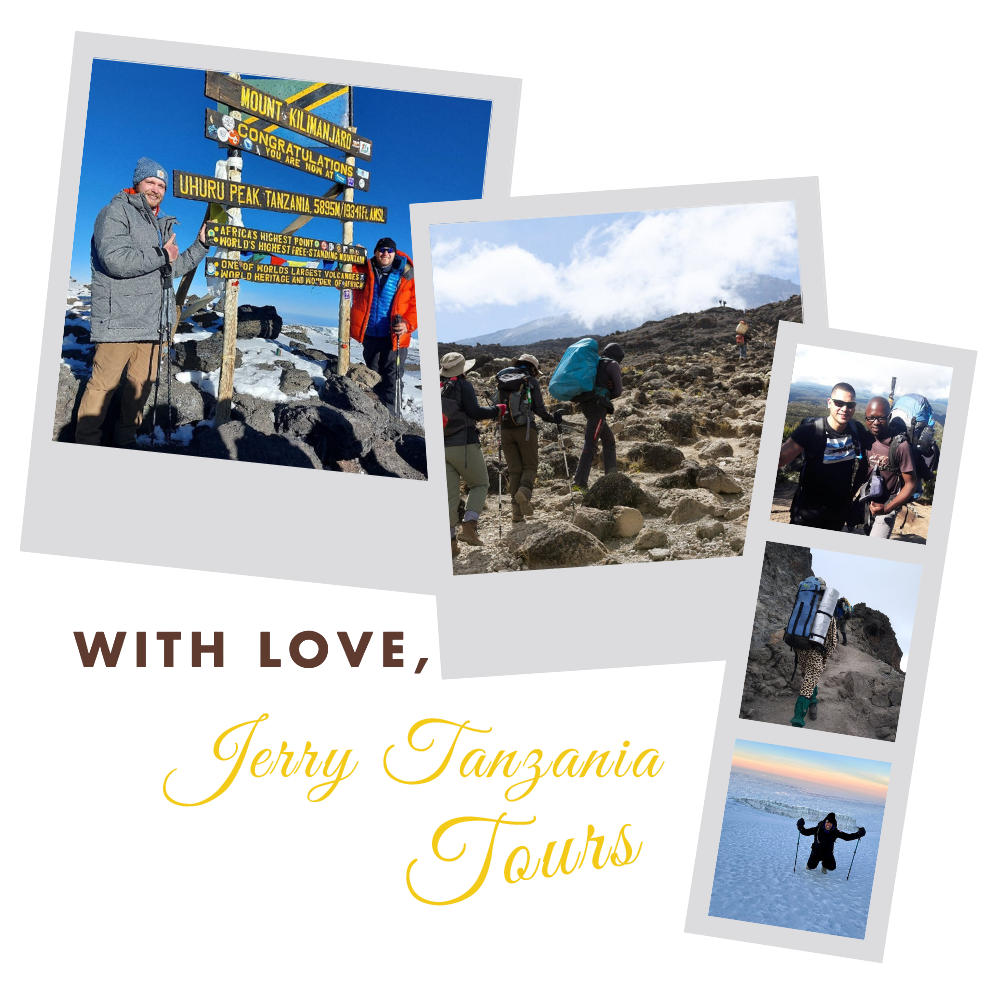

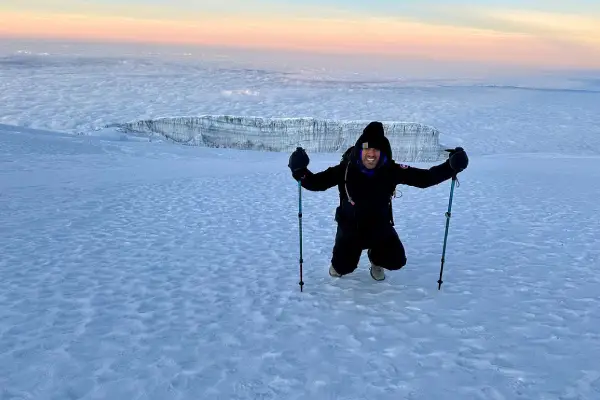




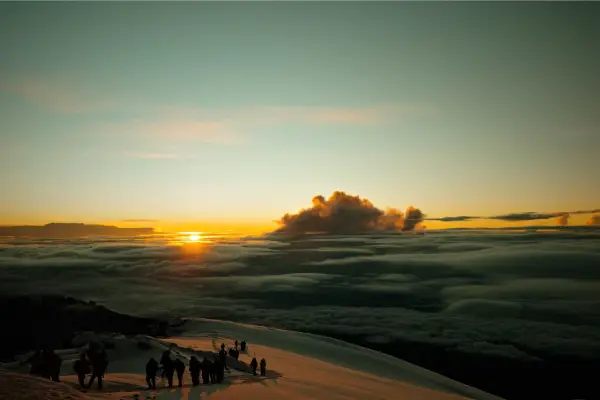

 Subscribe On Youtube
Subscribe On Youtube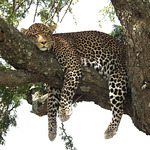
 1 Year ago
1 Year ago







